So You Want a Pink Princess Philodendron? Read This First.
Alright, let’s talk about the plant you’ve been seeing everywhere: the Pink Princess Philodendron. I’ve been working with tropical plants for a long, long time, and I’ve seen fads come and go. But honestly, nothing has quite captured people’s attention like this one. The contrast of those deep, almost-black leaves with bold splashes of hot pink is a legitimate showstopper. It looks less like a plant and more like a piece of modern art.
In this article
- Why This Plant is So Fickle: A Quick Science Lesson
- How to Pick a Winner at the Nursery
- Setting Up Your Princess’s Palace: Light, Humidity & Temp
- The Foundation: The Right Soil and Pot
- The Routine: Watering and Feeding Done Right
- The Next Level: Pruning for Pink and Making More Plants
- Troubleshooting Common Issues
- A Crucial Note on Safety
But here’s the most important thing I tell anyone thinking about buying one: that stunning beauty comes from a genetic quirk. And that quirk makes this plant a bit unstable and, frankly, a lot more demanding than your average houseplant. Many guides will label it “easy care,” but from a professional standpoint, I have to disagree. A snake plant is easy. A ZZ plant is easy. The Pink Princess? She’s a diva. She needs you to pay attention.
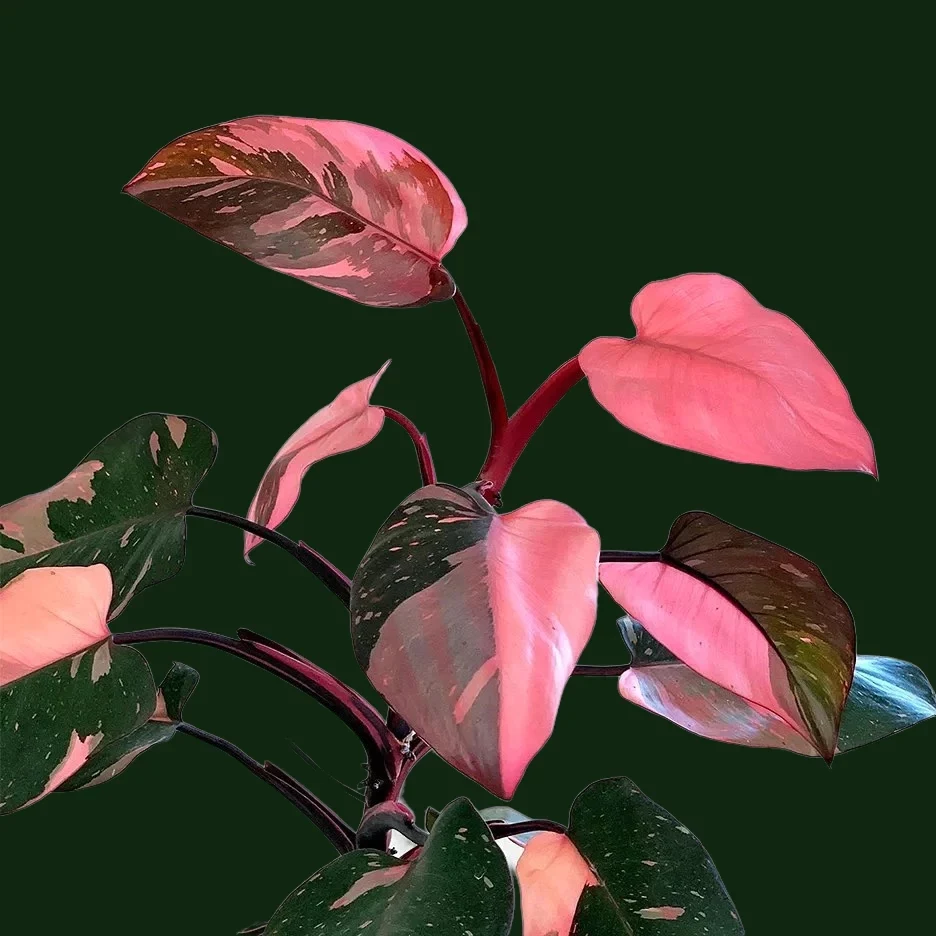
Is This Plant Actually For You?
Before you even think about adding one to your cart, let’s do a quick reality check. Ask yourself:
- Do you have a spot with very bright, but not direct, sunlight? This is non-negotiable.
- Are you willing to check the soil with your finger instead of just watering once a week? A rigid schedule is this plant’s worst enemy.
- Are you prepared to maybe, just maybe, have to chop it back if the pink starts to disappear? It takes a little courage!
If you answered yes, then you’re ready. My goal here isn’t to scare you off, but to give you the real-world, practical knowledge you need to succeed. With the right approach, you can absolutely do this.
Oh, and a quick heads-up: If you have curious pets or little kids, do yourself a favor and skip to the final safety section at the end before you fall head over heels in love. It’s super important.
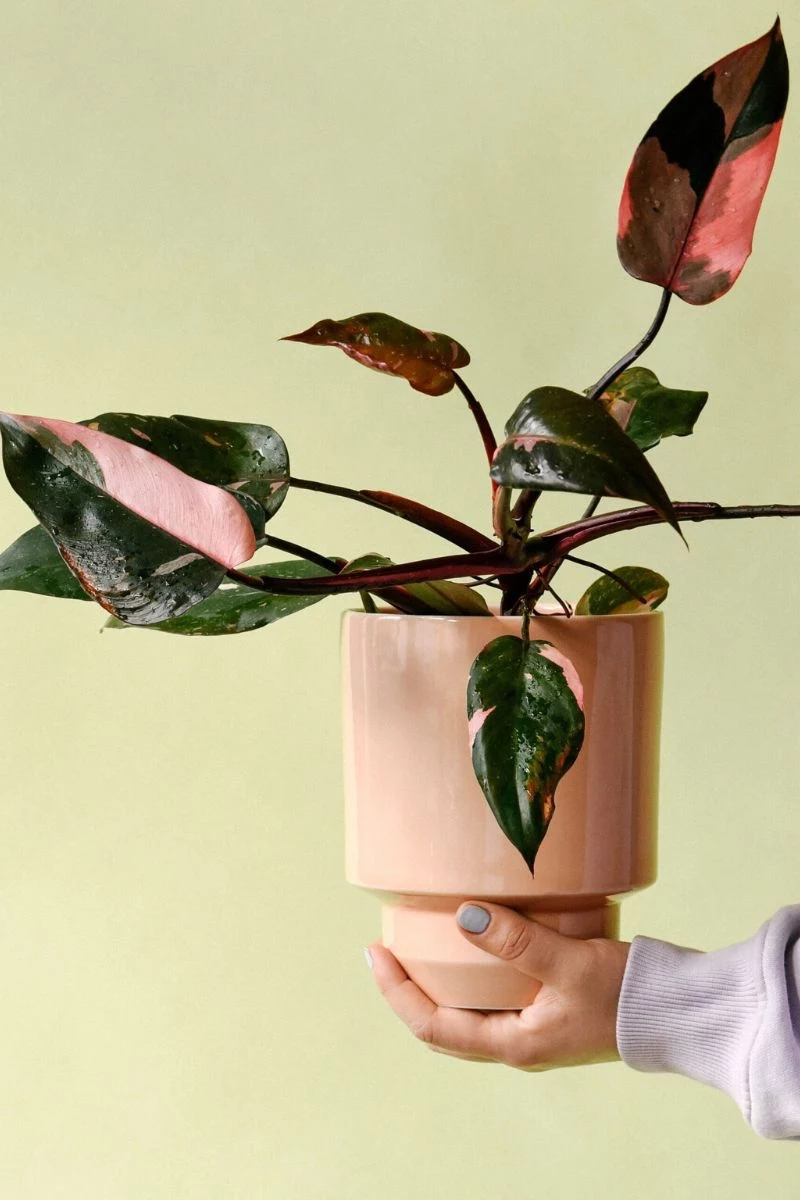
Why This Plant is So Fickle: A Quick Science Lesson
To keep a Pink Princess happy, you have to understand what makes it tick. It’s a special version of a climbing philodendron that originates in the tropics. The standard version is just a solid green plant, but the ‘Pink Princess’ is a cultivated variety—a mutation that was selected specifically for those pink markings. You wouldn’t just stumble upon this in the wild.
The pink color is the result of what’s called a chimera. The easiest way to think about it is that you have two different sets of plant DNA mashed into one single plant. You’ve got:
- Green Bits: These parts have chlorophyll. They do all the hard work of photosynthesis, turning light into energy to keep the plant alive.
- Pink Bits: These parts have zero chlorophyll. They look amazing, but they can’t make any food. They are complete freeloaders, relying on the green parts to feed them.
And that’s the whole game right there. It’s a constant balancing act. You need enough green to power the plant, but you want enough pink for the ‘wow’ factor. If a plant starts putting out all-green leaves, we call that “reverting.” It’s perfectly healthy, but it’s losing its special trait. On the flip side, if it puts out an all-pink leaf (a “full moon”), it’s beautiful but tragically, that leaf can’t sustain itself and will eventually die back.
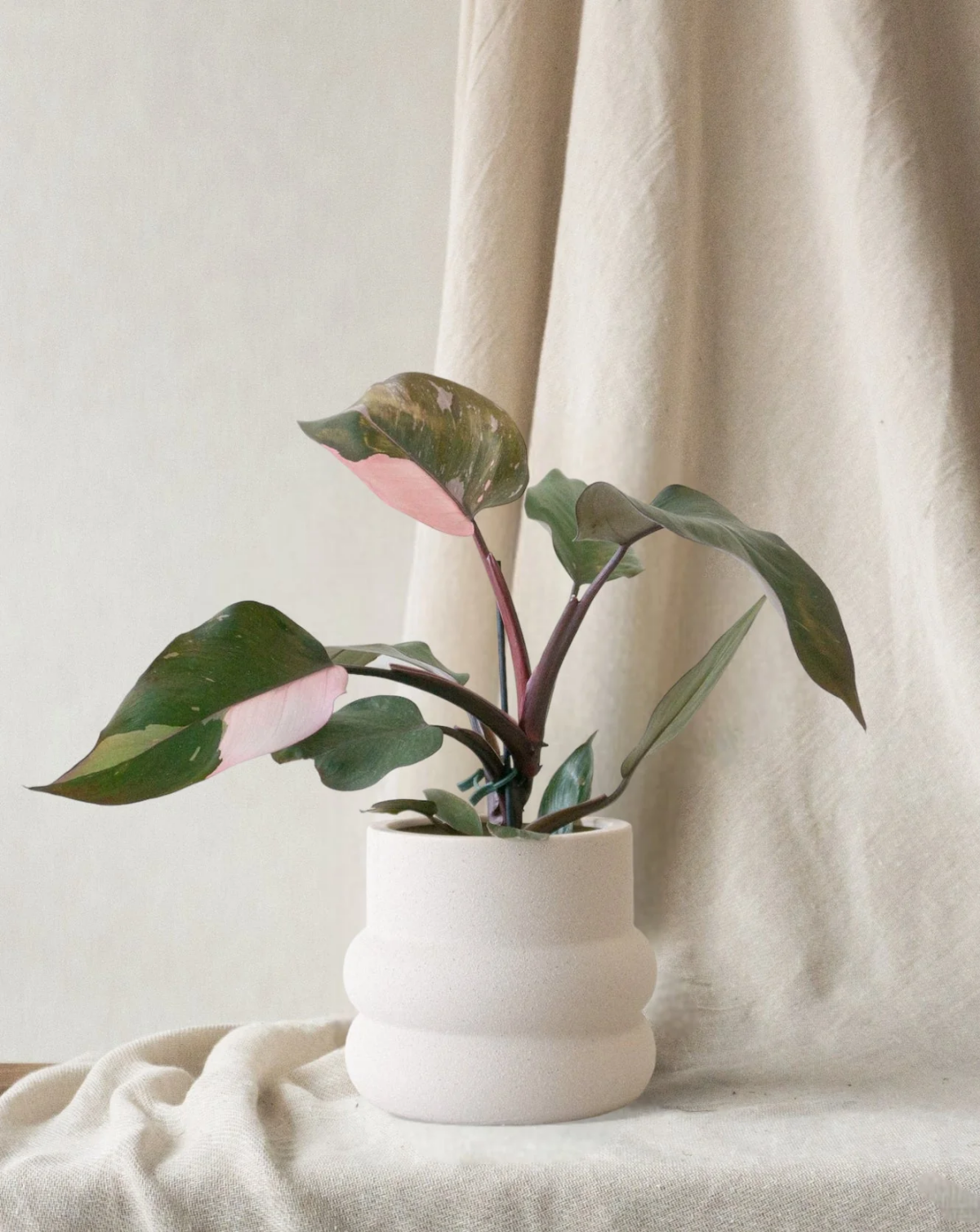
How to Pick a Winner at the Nursery
Your journey starts with choosing the right plant. When I’m sorting through a new shipment, I’m not looking for the flashiest one; I’m looking for the one with the best long-term potential.
Here are the green flags to look for:
- Balanced Variegation: Look for a plant that has a nice mix of pink and green on its existing leaves. Streaks, splashes, and speckles are all fantastic signs. A good balance on the stem itself—streaks of pink mixed with the dark green/burgundy—is the absolute best indicator of stable variegation for future growth.
- A Sturdy Stem & Healthy Roots: The stem should be firm, not floppy or mushy at the base. If you can, take a peek at the roots through the drainage holes. They should look whitish or light tan and plump. Black or mushy roots are a sign of rot, so walk away.
And here are the red flags to avoid:
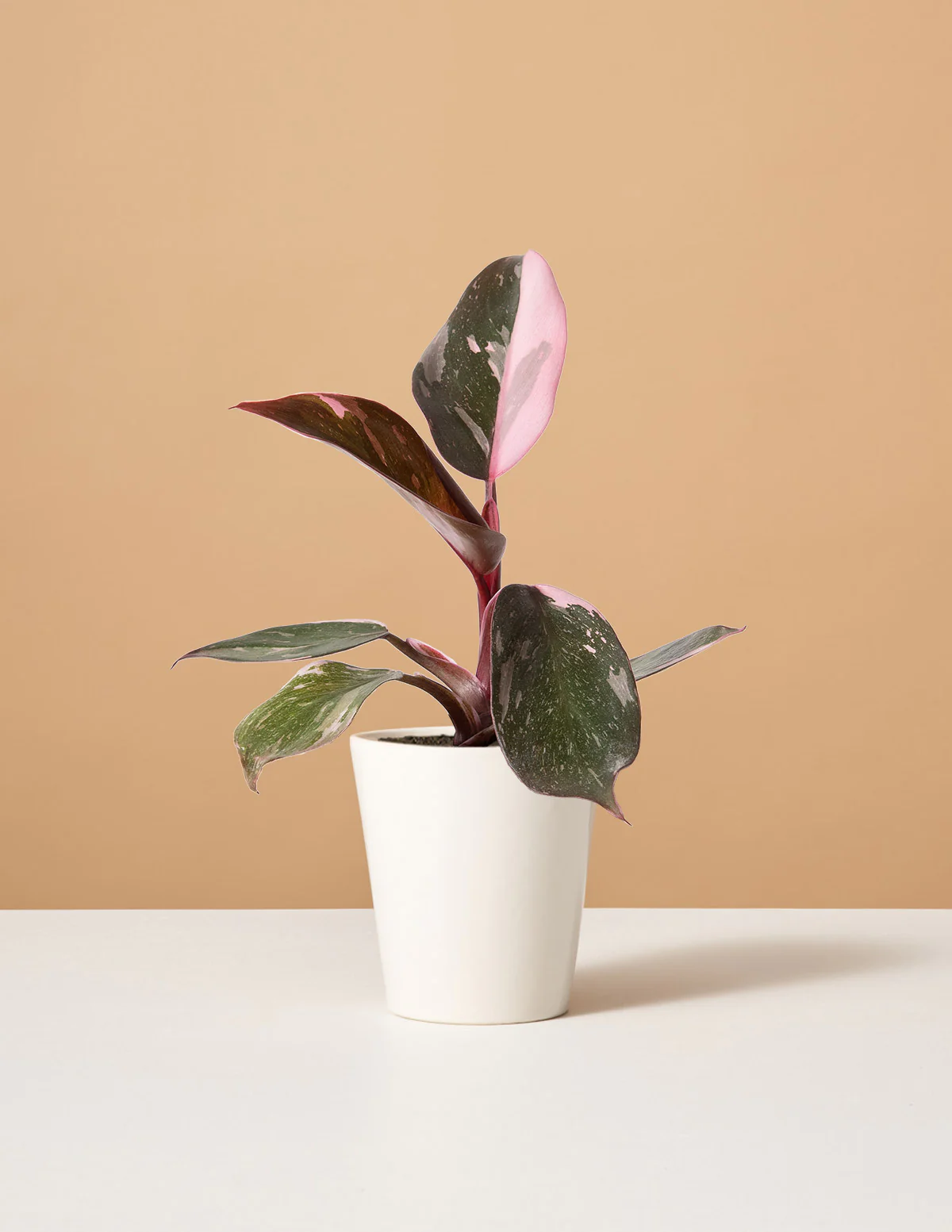
- The ‘Too Good to Be True’ Plant: A plant that is almost entirely pink is a major red flag. It looks incredible, I know, but it doesn’t have enough green to support itself and is set up for failure.
- The Bargain Bin Price: A healthy starter Pink Princess in a 4-inch pot will typically run you somewhere between $20 and $50. If you see one for under $15, be very suspicious. It’s likely a tiny, unrooted cutting or, worse, a ‘Pink Congo’ Philodendron. This is a different plant that’s chemically treated to turn pink, but all new growth will be plain green. A true Pink Princess has variegation that looks splashed or marbled, not a solid, uniform color.
Setting Up Your Princess’s Palace: Light, Humidity & Temp
Getting the environment right is 90% of the battle. Think about where its ancestors grew: in the warm, humid understory of a tropical rainforest. That’s the vibe we’re trying to recreate.
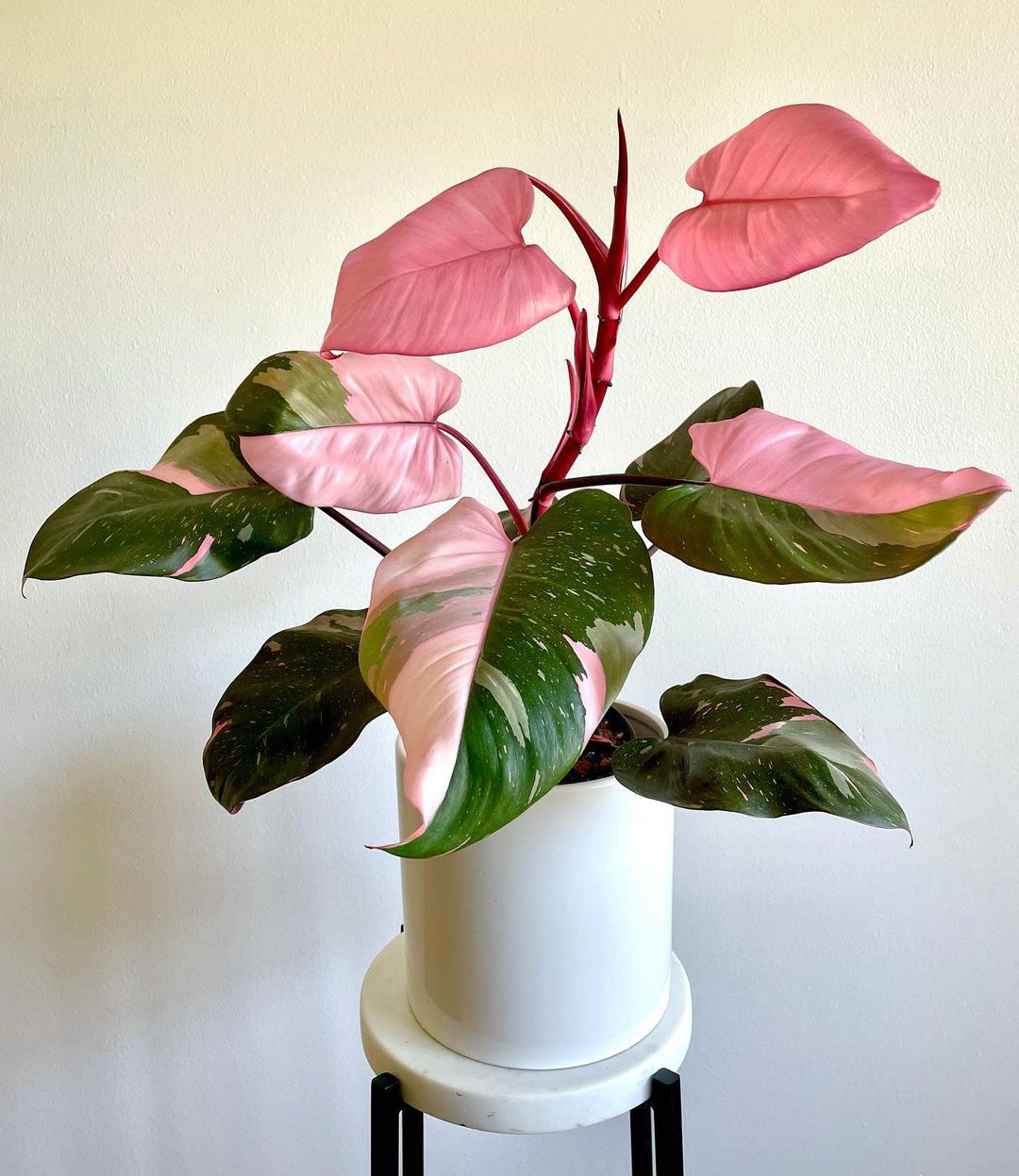
Light is Everything
This is the one you really have to nail. Not enough light, and your plant will panic and produce more green leaves to maximize its food production. Too much direct sun, and those gorgeous leaves will scorch. The delicate pink parts have no natural sunscreen, so they burn fast.
A spot a few feet back from a big east-facing window is often the sweet spot. It gets that gentle morning sun but is protected from the harsh afternoon rays. If you only have south or west-facing windows, hang a sheer curtain to diffuse the light. For many of us, especially in places with dark winters, a grow light is the real secret to success. It gives you total control. I keep my best ones under full-spectrum LED lights for about 12-14 hours a day, positioned 18 inches or so above the plant. You can get a great clip-on one online for $25 to $40.
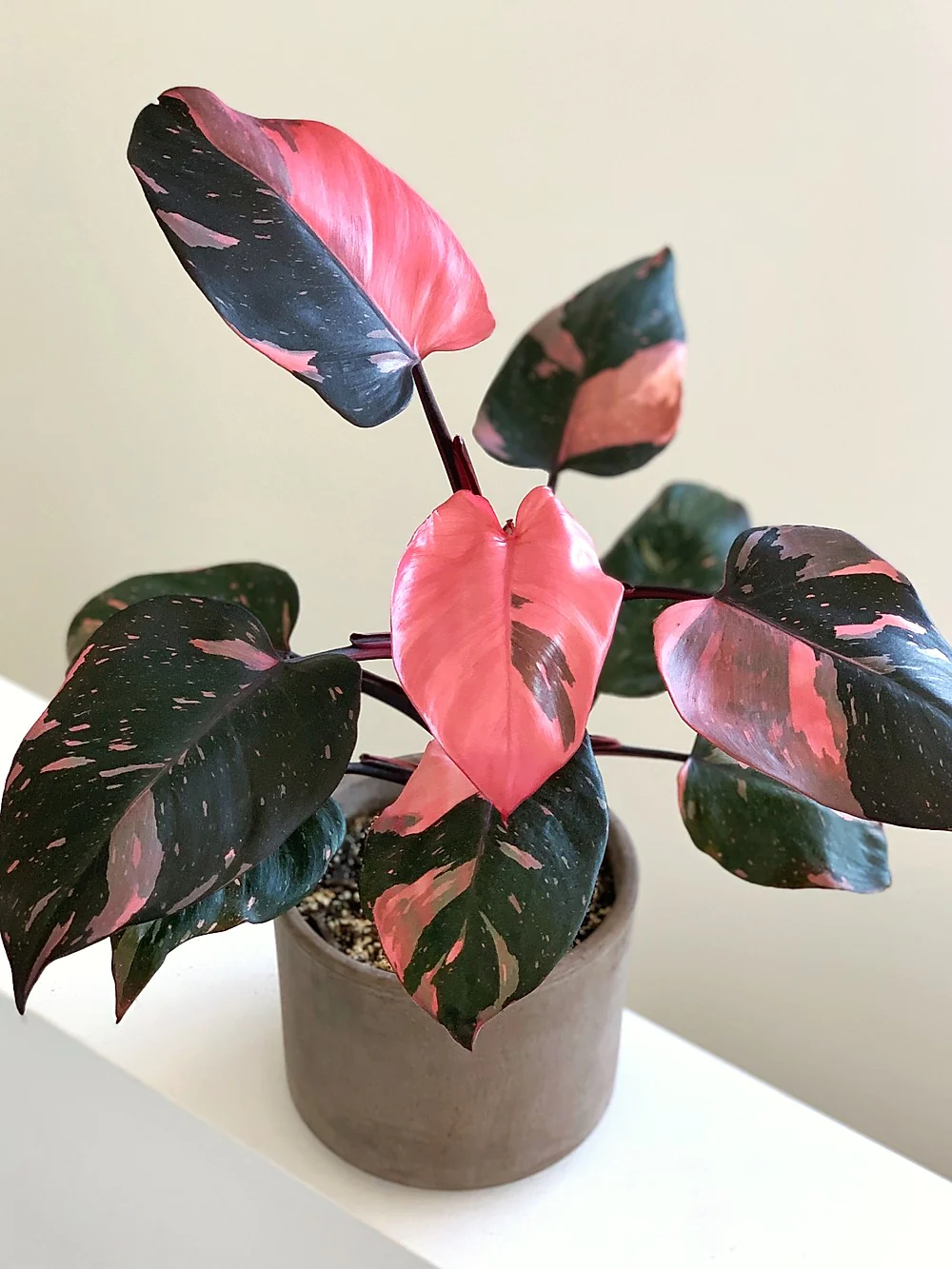
Give It a Little Humidity
Your home is probably drier than a rainforest. The ideal humidity for these guys is 50% or higher. If the air is too dry, you’ll see ugly brown, crispy edges on the leaves. A small humidifier is the best investment you can make; you can find decent ones for around $30. Grouping your plants together also helps create a little humid microclimate. Misting is… fine, but the effect lasts for about five minutes. It’s not a real solution.
Keep It Cozy
These are tropical plants, so they hate the cold. Keep them in a room that stays between 65°F and 80°F. More importantly, keep them away from drafty windows, doors, and A/C vents. A sudden blast of cold air can shock the plant and cause it to drop leaves.
The Foundation: The Right Soil and Pot
You can’t just use any old bag of potting soil. Philodendrons in nature often grow up trees, so their roots are adapted for grabbing onto bark and need tons of air. A dense, heavy soil will hold too much water and lead to the dreaded root rot.
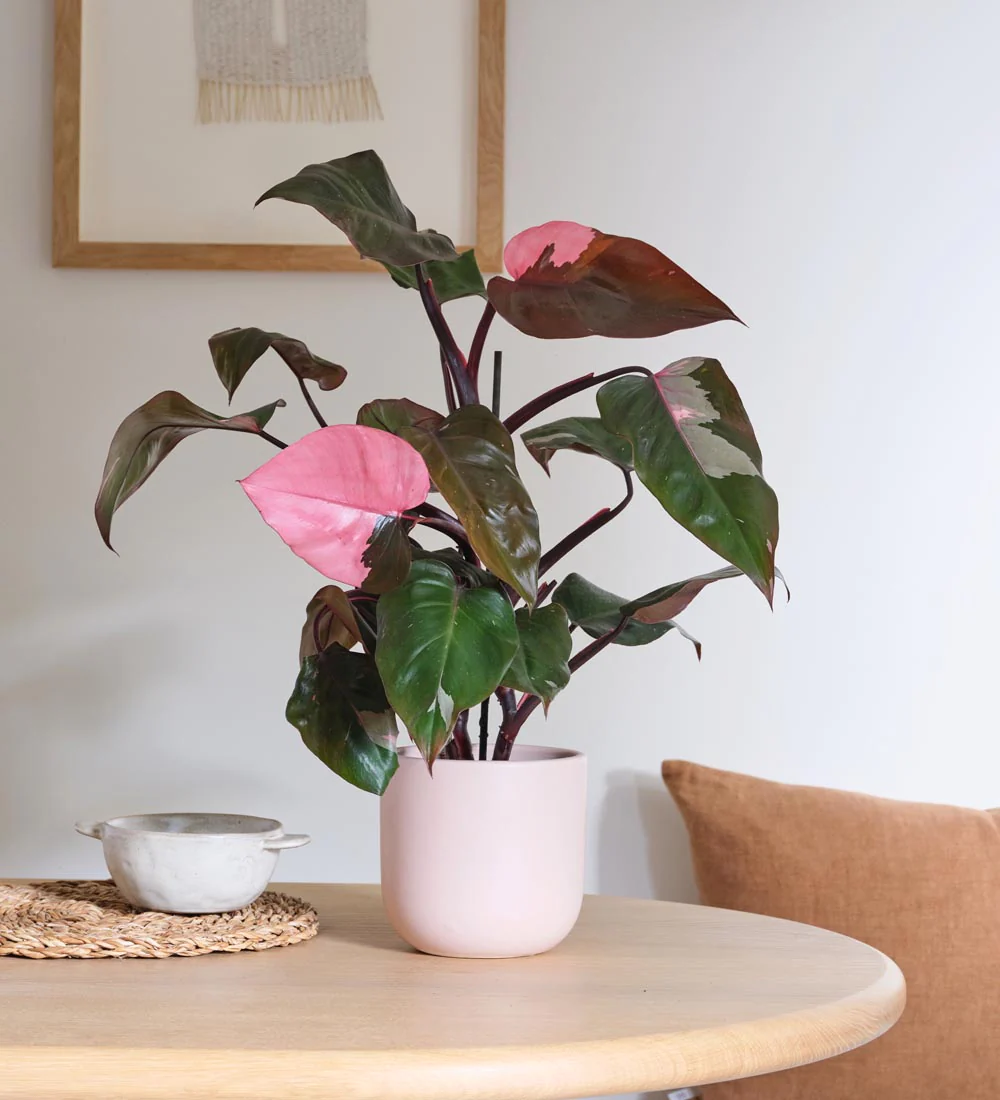
The Perfect Chunky Soil Mix
Here’s the recipe I swear by. It’s super simple. And don’t get hung up on exact measurements—a “part” can be an old yogurt cup, a coffee scoop, whatever. Just use the same scoop for each ingredient to keep the ratio right.
- 1 part good quality indoor potting mix
- 1 part orchid bark (the chunky kind)
- 1 part perlite
- A small handful of horticultural charcoal (optional, but great for keeping the soil fresh)
- A small handful of worm castings (optional, for a gentle nutrient boost)
When you mix this all up, it should feel light, airy, and chunky. You can find orchid bark and perlite in separate bags at any big-box garden center or local nursery. The charcoal might be a bit trickier to find, but it’s often sold in the aquarium section of pet stores or online.
Your Beginner’s Shopping List:
- A healthy Pink Princess plant ($20-$50)
- A pot with a drainage hole (terracotta is great if you tend to overwater)
- A small bag of Orchid Bark ($10-$15)
- A small bag of Perlite ($8-$12)
- A bag of quality indoor potting mix
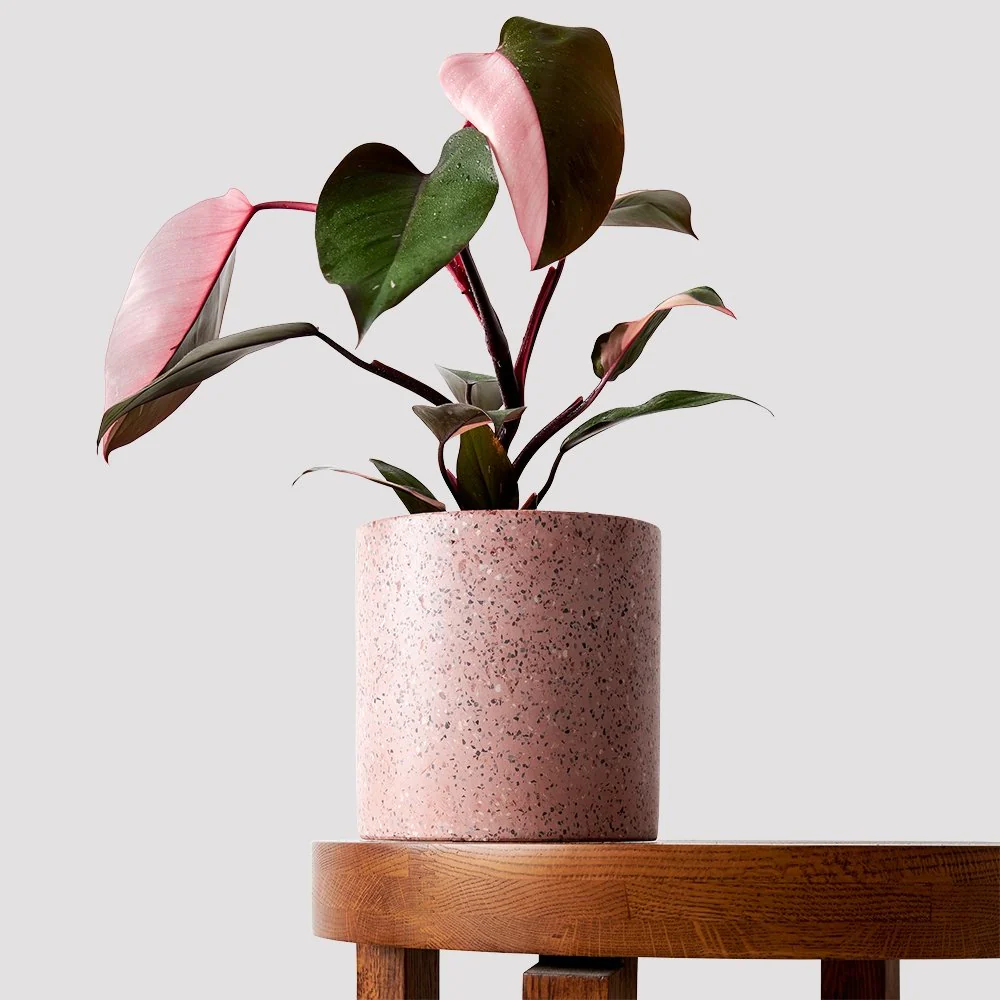
Repotting: Less is More
Only repot your plant when it’s literally busting out of its current home—you’ll see a ton of roots circling the bottom or poking out the drainage hole. When you do, choose a new pot that’s only 1-2 inches wider. A pot that’s too big holds onto excess moisture, which is a one-way ticket to root rot. Water it lightly after repotting and give it a week to settle in before going back to your normal routine.
The Routine: Watering and Feeding Done Right
Overwatering is the #1 cause of houseplant death, period. The trick is to forget the calendar and learn to read your plant. Stick your finger two inches deep into the soil. If it feels damp, wait. If it feels dry, it’s time to water. Another pro tip: get a feel for the weight of the pot. When it feels noticeably lighter than it did after you last watered, it’s ready.
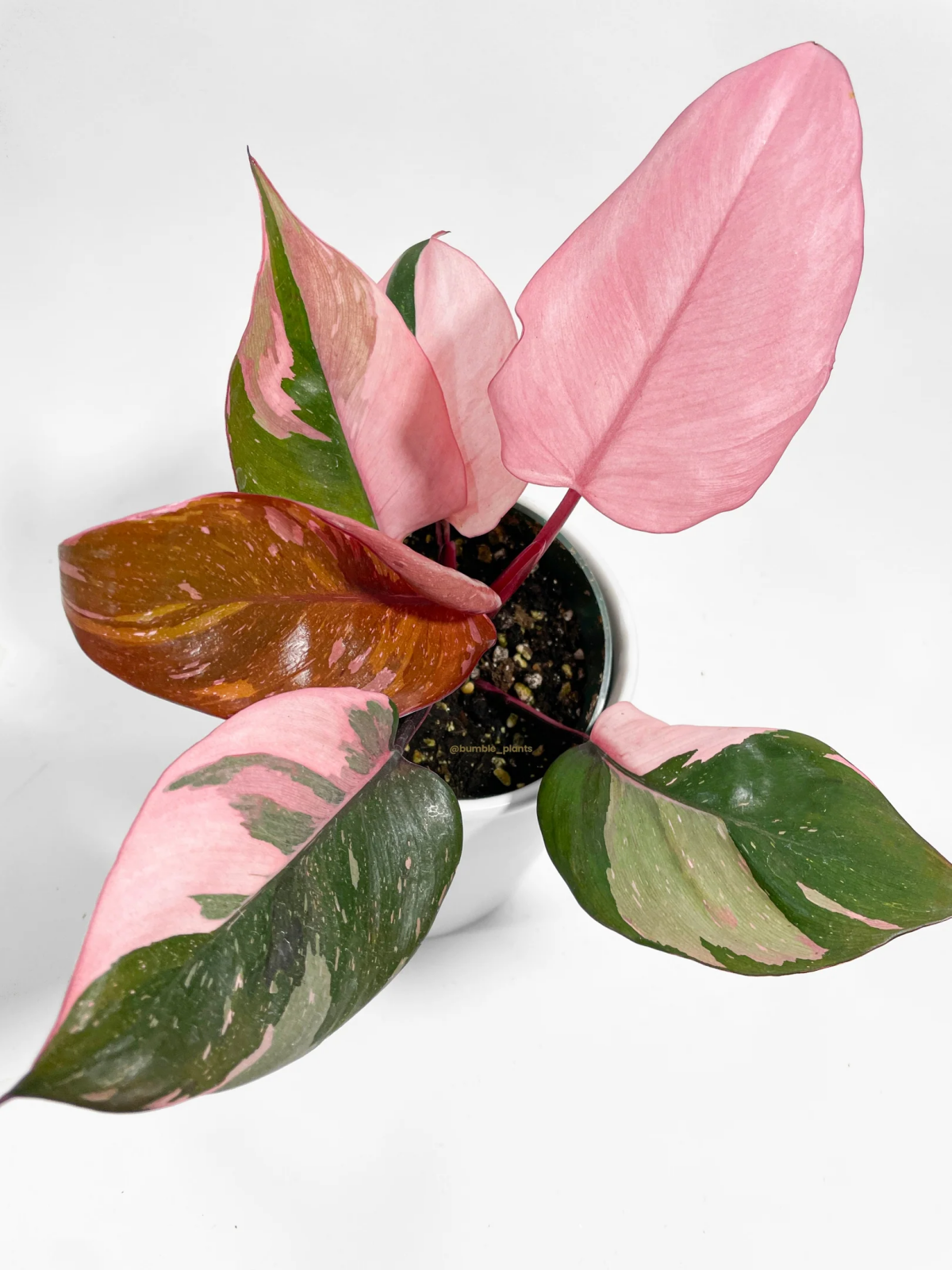
When you do water, do it thoroughly. Take it to the sink and let lukewarm water run through the pot until it pours freely out the bottom. This flushes out any mineral salts and ensures all the roots get a drink. Let it drain completely before putting it back.
As for feeding, think of it as a little vitamin boost. During spring and summer, when the plant is actively growing, give it a balanced liquid fertilizer (look for one with numbers like 10-10-10) diluted to half-strength every 4-6 weeks. Don’t fertilize in the fall and winter when growth slows down.
The Next Level: Pruning for Pink and Making More Plants
This is where you go from being a plant owner to a true plant parent. Strategic pruning is the key to keeping your variegation looking its best.
Getting the Pink Back
If your plant starts putting out solid green leaves, you need to step in. The green growth is more vigorous and will eventually take over. I know it’s scary, but you have to be brave. I had to chop my favorite one way back once, and my heart was in my throat, but a couple of months later the new growth came in with more pink than ever. Trace the stem back to the last leaf that had good, balanced color. Using a clean, sharp knife or shears, cut the stem about a half-inch above that leaf’s node (the little bump where the leaf meets the stem). This encourages the plant to activate a new growth point from that variegated part of the stem.
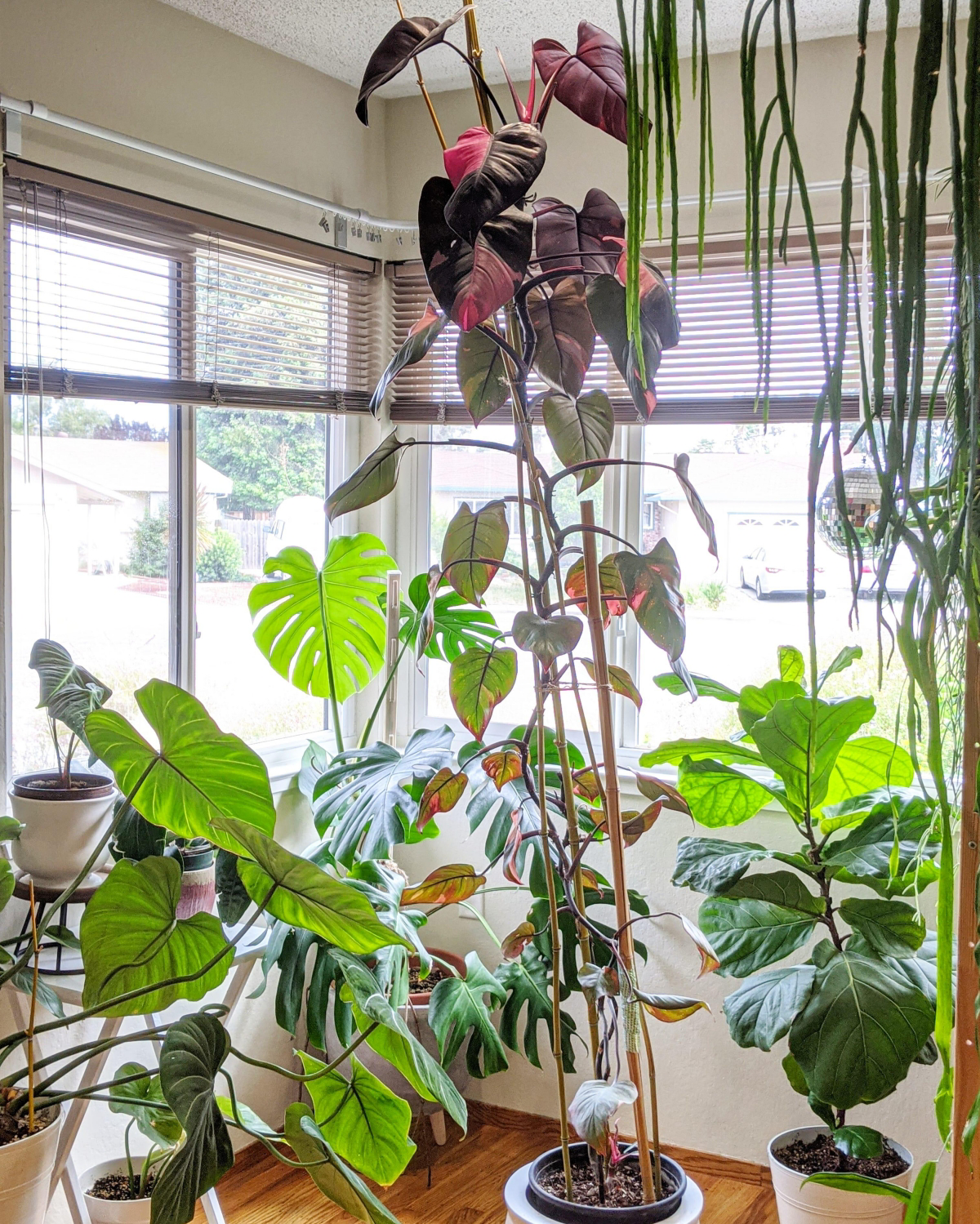
Making New Plants (Propagation)
The piece you just cut off is a perfect cutting to make a new plant! As long as it has at least one leaf and a node, you can root it. I find rooting in a glass of water is easiest for beginners; you should see little white roots forming in about 3-4 weeks. Once they’re a couple of inches long, you can plant it in that chunky soil mix.
If you have a leafless piece of stem with a few nodes on it (we call these “wet sticks”), you can propagate those too. Just lay the stick on a bed of moist sphagnum moss inside a sealed plastic container to create a mini-greenhouse. Put it in a warm, bright spot. It takes patience—sometimes 6-8 weeks or more—but eventually, a tiny new leaf should sprout from one of the nodes.
Troubleshooting Common Issues
- Lower leaves turning yellow: 99% of the time, this is from overwatering. Check the soil, and let it dry out completely.
- Brown, crispy leaf edges: This is almost always a cry for more humidity.
- Brown spots in the middle of leaves: If they look like dry patches, it’s likely sunburn. Move it to a less intense spot.
- Pests: Check under the leaves for tiny webs (spider mites) or little white fuzzy dots (mealybugs). You can wipe them off with a cotton swab dipped in rubbing alcohol or spray the plant down with an insecticidal soap.
- Limp, droopy plant with a mushy stem: This is likely root rot, the most serious problem. You have to perform surgery: unpot it, cut away every single black, mushy, or smelly root, and repot in fresh, barely-damp soil. It’s a long shot, but it’s the only chance.
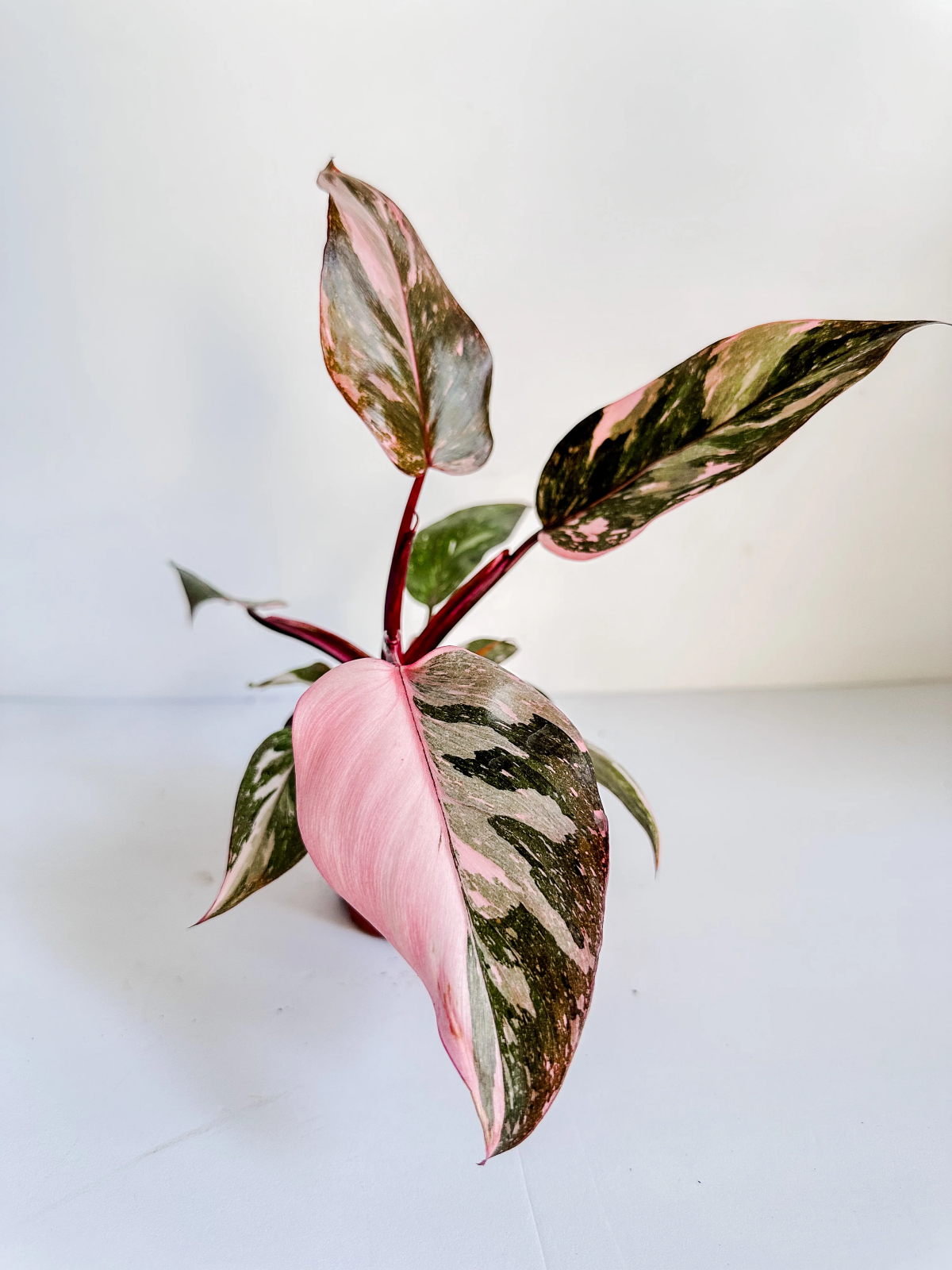
A Crucial Note on Safety
Okay, this is vital. Like all philodendrons, the Pink Princess is toxic to cats, dogs, and humans if chewed on or ingested. It contains crystals that cause immediate and painful irritation, swelling, and drooling. It’s rarely fatal, but it’s an emergency vet visit waiting to happen. Please, please, please keep this plant on a high shelf or in a room where your pets and kids can’t get to it.
The Pink Princess is definitely a commitment. It’s not a background plant; it’s a partner in your hobby. It’ll teach you to be a more observant and responsive plant owner. And when you get it right, the reward is a breathtaking piece of living art that you can be truly proud of.










